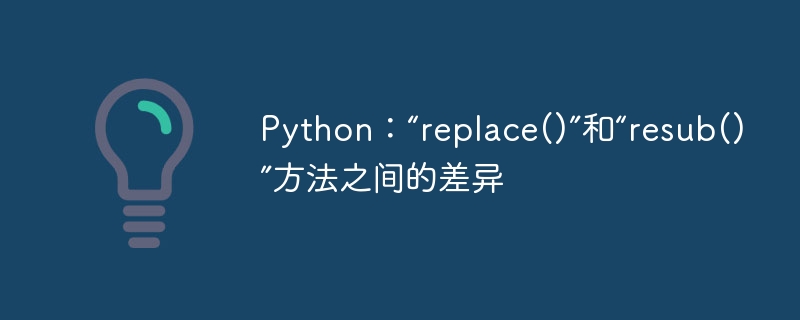
python 中的 .replace() 方法和 .re.sub() 函数都用于替换部分字符串,但它们具有不同的功能和用例。以下是它们之间的根本区别:
使用 .replace():
text = "the quick brown fox jumps over the lazy dog"
result = text.replace("fox", "cat")
print(result) # output: the quick brown cat jumps over the lazy dog
使用.re.sub():
import re text = "the quick brown fox jumps over the lazy dog" pattern = r'\bfox\b' replacement = "cat" result = re.sub(pattern, replacement, text) print(result) # output: the quick brown cat jumps over the lazy dog
使用 .re.sub() 的高级示例:
import re text = "The quick brown fox jumps over the lazy dog" pattern = r'(\b\w+\b)' # Matches each word replacement = lambda match: match.group(1)[::-1] # Reverses each matched word result = re.sub(pattern, replacement, text) print(result) # Output: ehT kciuq nworb xof spmuj revo eht yzal god
总之,使用 .replace() 进行简单直接的子字符串替换,当您需要正则表达式的强大功能和灵活性来进行基于模式的替换时,使用 .re.sub() 。
以上就是Python:“replace()”和“resub()”方法之间的差异的详细内容,更多请关注php中文网其它相关文章!

每个人都需要一台速度更快、更稳定的 PC。随着时间的推移,垃圾文件、旧注册表数据和不必要的后台进程会占用资源并降低性能。幸运的是,许多工具可以让 Windows 保持平稳运行。

Copyright 2014-2025 https://www.php.cn/ All Rights Reserved | php.cn | 湘ICP备2023035733号